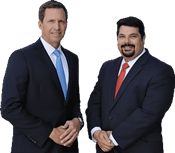As a financial analyst and writer, I understand that the key to building a successful relationship with a financial advisor is clarity, especially around how they get paid. Let’s take a close look at the various fee structures financial advisors may use, equipping you with the knowledge to make the right choice for your financial journey.
Common Fee Structures Among Financial Advisors
When it comes to paying for financial advice, you’re likely to encounter a few standard fee arrangements:
- Percentage of assets under management (AUM): Typically, advisors charge between 0.5% to 2% of your investment portfolio’s value each year. I like to think of this as a partnership — as your assets grow, so does the advisor’s reward.
- Hourly fees: Paying an advisor on an hourly basis can range greatly, but it often hovers between $200 to $400 per hour.
- Fixed fees: For particular financial planning or consultation services, advisors might charge a flat fee. Based on the task’s complexity, this can vary from $1,000 to $3,000.
While the price tag is important, it’s also crucial to consider how these fees influence your advisor’s motivation and the quality of advice they provide.
 (AD) Lost money because of bad financial advice or outright fraud? You may get it back by filing a complaint. Haselkorn & Thibaut has 50+ years of experience and a 98% success rate. Don’t delay if you’ve suffered losses. (AD) Lost money because of bad financial advice or outright fraud? You may get it back by filing a complaint. Haselkorn & Thibaut has 50+ years of experience and a 98% success rate. Don’t delay if you’ve suffered losses. Call Haselkorn & Thibaut at 1-888-784-3315 for a free consultation, or visit InvestmentFraudLawyers.com to schedule. No Recovery, No Fee. |
Delving into Percentage of AUM Fees
If you opt for an AUM fee structure, your financial advisor’s income ebbs and flows with your portfolio. This means their paychecks grow if your investments do well. It’s a way to ensure our goals are aligned — I am motivated to help your wealth flourish.
However, it’s worth noting that for those who have accumulated substantial wealth, AUM fees can be significant. For instance, a 1% AUM fee on a $1,000,000 portfolio comes to $10,000 annually — not pocket change by any means.
Considering Hourly and Fixed Fee Advisors
For those starting out or those with straightforward financial situations, choosing advisors who charge hourly or a flat rate might be more economical than AUM. Paying for just the time or service you need can keep costs down, particularly if your assets are modest in size.
Moreover, clients with larger portfolios might find an hourly-based advisor can mean substantial cost savings in comparison to AUM fees. However, these fee models could mean the advisor has less incentive to focus on your financial growth over the long term.
It’s vitally important to weigh these fee structures carefully when selecting a financial advisor. But remember, an advisor’s worth is not just measured in the fees you pay, but in the trust and confidence they instill in you, enabling you to make decisions that enrich your financial future.
As John D. Rockefeller said, “The way to make money is to buy when blood is running in the streets.” In the same vein, finding a good financial advisor is about due diligence and making sure their fee structure aligns with your financial goals. I advise caution — it’s a fact that unsuitable financial advice costs Americans billions of dollars each year. That’s why it’s essential to verify your advisor’s credentials, which you can easily do through their [FINRA CRM number](https://brokercheck.finra.org/).
Exploring the fees charged by financial advisors is more than a cost exercise; it’s about establishing a partnership where your success defines theirs. Armed with this insight, you’re ready to pick a financial advisor whose fee structure suits your needs, supports your aims, and helps you navigate your financial voyage toward prosperity. It’s a conversation worth having, and it starts with understanding these fees.




